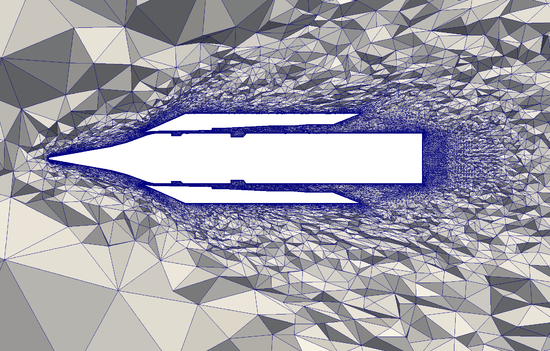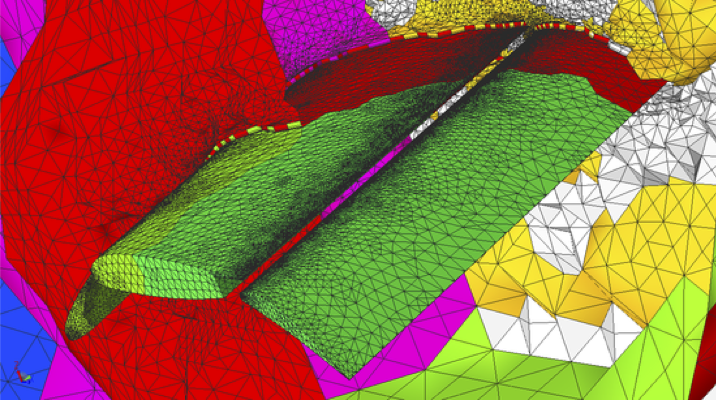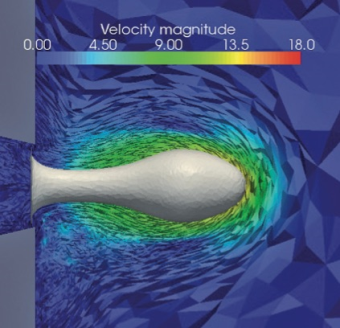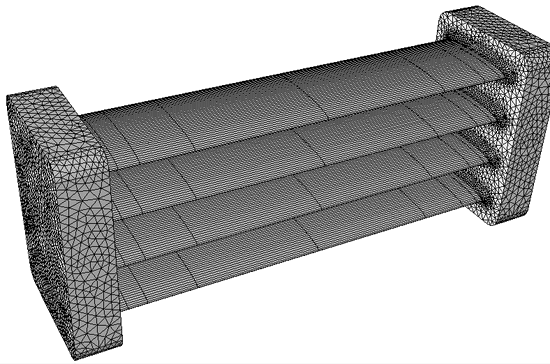
Model Courtesy Altair
Meshing for CFD
The Challenge
Computational Fluid Dynamics (CFD) analyses are highly demanding on mesh generation software and computer resources. Strong solution gradients, including boundary layers and shocks, as well as turbulence are common solution features. Without a high quality mesh constructed to capture the intricacies of the solution, the results may be unreliable or very expensive to obtain. Further, proper meshes for large problems are often too big for classical workstations, requiring large scale distributed memory computers for mesh generation and the solution.
The Solution: CFD Meshing Tools from Simmetrix
Simmetrix provides a powerful set of mesh generation tools for the creation of meshes optimized for CFD problems. Boundary layer and extrusion meshes along with precise control of mesh refinement and gradation are among the tools that we provide to construct the proper mesh for the problem at hand. For large problems the suite of Simmetrix' mesh generation tools can be deployed scalably on massive distributed parallel computer architectures.
Benefits of Simmetrix' Meshing Tools for CFD:
- Fully automatic mesh generation saves time over more manual mesh generation methods.
- Accurate results with meshes optimized for problem.
- Validity of mesh is guaranteed, even for higher order meshes.
- Mesh adaptivity can be integrated directly in memory with your solver.
Adaptively refined CFD mesh for flow around a wing. Colors indicate processor associativity on parallel computer.
Supersonic Flow Adaptivity

Adapted mesh of CIAM/NASA scramjet case, Mach number 6.5, boundary layers interacting with shocks, 5.4 million nodes, 13.5 million elements created in the final mesh.




